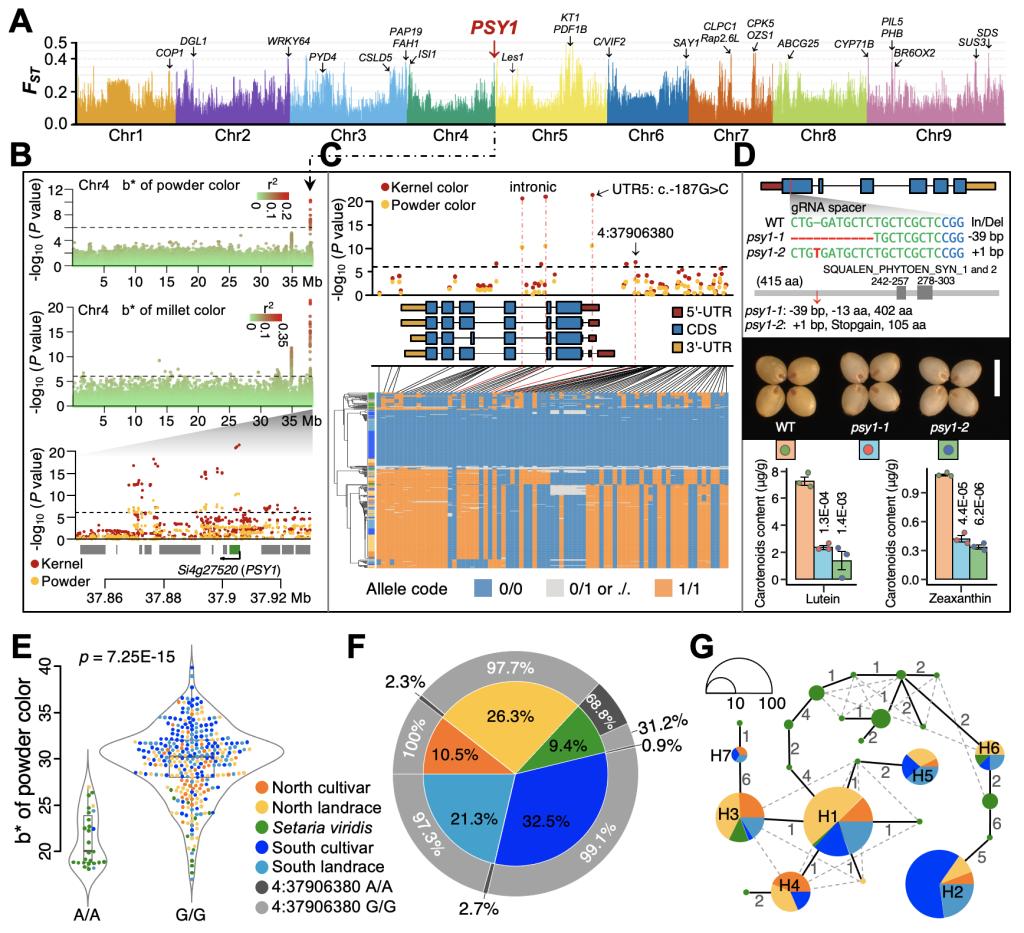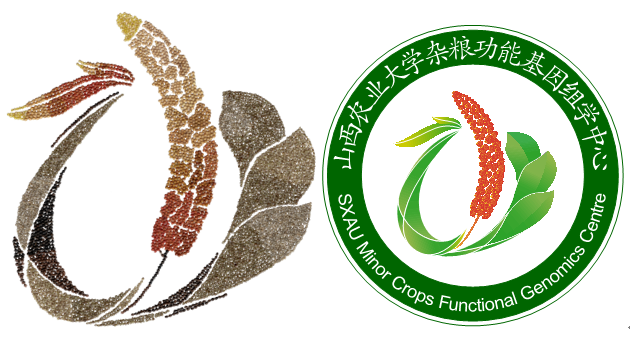On July 7th, the multi-grain molecular breeding team of SXAU published a research paper entitled " Multi-omics analyses of 398 foxtail millet accessions reveal genomic regions associated with domestication, metabolite traits and anti-inflammatory effects” in Molecular Plant, the top journal in the field of international botany (Top journal in Region 1, SCI impact factor 21.949). This is another major achievement of the team following the publication of research results in Nature Plants, a top journal in the international plant field (Top journal in Region 1, SCI impact factor 13.256) in 2020. It is reported that this is the paper with the highest impact factor published in the field of international millet research in recent years. This study lays a foundation for the analysis of the key genetic basis of important metabolites in millet, and provides theoretical support for millet as a food homologous food and serving the big health industry.

The Multigrain Molecular Breeding Team of SXAU Published Research Results in Molecular Plant
Associate Professor Li Xukai and Associate Professor Gao Jianhua from the College of Life Sciences of SXAU, Dr. Song Jingyi from Beijing Technology and Business University, and Assistant Professor Guo Kai from the University of Michigan are the co-first authors of the paper; Professor Han Yuanhuai from the College of Agriculture of SXAU and Professor Wang Xiaowen from the College of Food Science and Engineering of SXAU, Associate Professor Chen Peng of Huazhong Agricultural University, Researcher Diao Xianmin of the Institute of Crop Science, Chinese Academy of Agricultural Sciences, and Associate Professor Wu Hua of Beijing Technology and Business University are the co-corresponding authors of the paper. The first author and corresponding author of SXAU are both members of the Shanxi Provincial Key Laboratory of Multigrain Germplasm Innovation and Molecular Breeding. The research was funded by the National Key R&D Program, the National Natural Science Foundation of China, the National Natural Science Foundation of China Joint Fund, and the Shanxi Provincial Key R&D Program.
Millet (Setaria italica) is a diploid self-pollinating crop with a small genome and a high-quality reference genome. It is a C4 cereal model plant with great development potential. It is domesticated from the wild green Setaria viridis and has high nutritional and medicinal value. In the Ming Dynasty, Li Shizhen recorded in Compendium of Materia Medica: millet "treats nausea and dysentery, replenishes deficiency, and opens the stomach". Studies have shown that consuming millet can alleviate or even cure chronic digestive disorders. To this day, women in northern China still prefer to eat millet porridge for physical recovery after giving birth to children in confinement. However, the key genetic basis behind the changes in the content and characteristics of millet metabolites, as well as the association between metabolites and their anti-inflammatory and stomach-nourishing effects, remain unclear. In this study, 398 millet natural populations were used as research materials, and the genetic mechanism of metabolite directional changes in millet domestication selection was revealed through a comprehensive multi-omics analysis of whole genome resequencing, transcriptome, metabolome, and anti-inflammatory group.

Domestication analysis of foxtail millet population and functional identification of beige trait GWAS and PSY1
The results of FST analysis revealed that the phytoene synthase gene (PSY1), which is the first synthetase in the carotenoid biosynthesis pathway, is also the key rate-limiting enzyme, was selected for domestication. One of the distinguishing features of millet domestication is that the kernels are yellow after hulling (setaria is gray). Beige is mainly determined by the content of carotenoids and flavonoids in the seed coat, aleurone and endosperm. GWAS analysis of the millet beige trait found that the most significant signal was also located on PSY1. The PSY1 gene was further edited using CRISPR-Cas9 technology to create a mutant of this gene in foxtail millet. Compared with WT, the carotenoid content in the mutant line was significantly reduced, and the content of lutein and zeaxanthin in millet was reduced respectively by 25.5% and 34.4%.
In vitro anti-inflammatory experiments found that there was a certain correlation between the metabolome of millet and its anti-inflammatory activity. Among them, 83 metabolites have anti-inflammatory effects and can significantly inhibit the production of inflammatory factors, even reaching the same low level as in the untreated control group. For example, naringenin chalcone and coumaroylquinic acid have been reported to have significant anti-inflammatory activity. It is revealed that the anti-inflammatory effect of millet is a comprehensive effect of multiple components, and the components involved in the anti-inflammatory metabolism of millet are not only partially known, but many need to be further isolated and identified.

Team Logo made up of different beige millet germplasm grains
The Molecular Breeding Team of Miscellaneous Grains of Shanxi Agricultural University was established in 2010 by Professor Han Yuanhuai, a high-level talent introduced by Shanxi Province. At present, there are 30 members, including 1 high-level talent introduced by Shanxi Province, 1 leading talent introduced by Shanxi Province, 2 top-notch talents of "Three Jin Yingcai", 8 outstanding young talents of "Three Jin Yingcai", and 8 young talents of "Jinnong". The team is mainly engaged in the research of functional genomics of miscellaneous grains, molecular regulation network of efficient utilization of nitrogen and phosphorus, molecular mechanism of excellent quality of millet, and resistance mechanism of millet white disease. In recent years, it has undertaken more than 30 projects of the National Natural Science Foundation of China and 5 sub-projects of the National Key R&D Program; published more than 60 SCI papers; cultivated a series of millet strains such as Huajinzao, Huajinai and Huajinza.

Group photo of teachers and students of the multigrain molecular breeding team
Paper link: https://www.cell.com/molecular-plant/fulltext/S1674-2052(22)00223-4